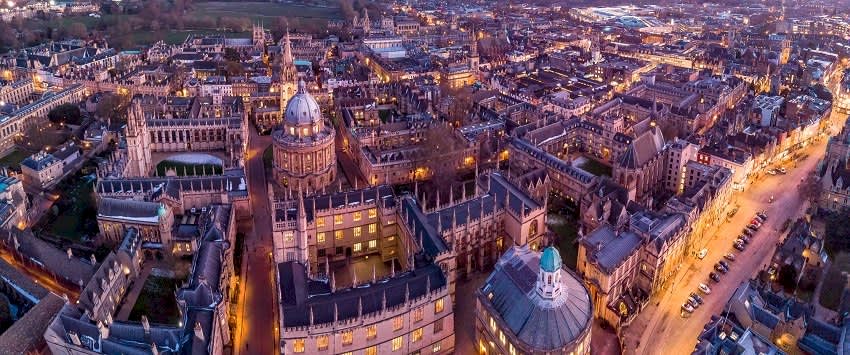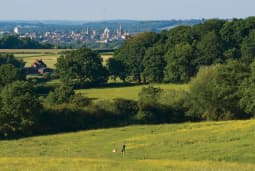During my conversation with Debbie Dance, director of the Oxford Preservation Trust, I slowly realised I’d been getting something wrong
– about Oxford, that is. It was the same feeling I got when at one point or another I realised I didn’t actually know what ‘esoteric’ meant. It starts with the embarrassment of someone informing you, bemused, that a flapjack can’t be esoteric, followed by the satisfaction of acquiring a new word. What I’d been getting wrong about Oxford was the idea that, in terms of its heritage at least, things were fixed, locked and protected – set in limestone, if you will.
Wrong. Well, mostly wrong; of course some things will remain – I don’t think we’re likely to see All Souls become an Asda, Magdalen a Morrisons or Lincoln a Lidl (I’ll stop there, but don’t think that’s because I’ve run out). I learnt from Debbie that it was OPT that saved Boars Hill and therefore the most perfect view of the city imaginable –Matthew Arnold’s view that ‘needs not June for beauty’s heightening’. Boars Hill, I discovered, was rescued from the jaws of developers – apparently, “it was supposed to look like Botley”. I felt naïve, but that was overcome by the satisfaction of knowing that an organisation like the OPT, and people such as Debbie, with the requisite tenacity and passion, are fighting Oxford’s corner, and have done for decades.
The revelations didn’t end there. I asked Debbie what she considered to be OPT’s major achievements in its 90 years. “When you look back, a lot of what the city almost takes for granted has our hands on it. Whether it’s South Park, which OPT gave to the city in 1951 for the Festival of Britain, whether it’s the view from Boars Hill or, more recently, the restoration of Oxford Castle and the saving of our lovely cottages in St Ebbes – it’s kind of endless really. It’s both the green setting of the city, but also the heritage centre of it.” Last, though certainly not least, “we’re pretty proud of Oxford Open Doors. It’s now the most successful heritage open day event in the UK in a historic city.”
Oxford Open Doors
For the uninitiated, Oxford Open Doors is easy enough to grasp, though the exact extent of its value might take a moment of reflection. Its most basic allure is that the public are given access to the buildings and areas of the city that are otherwise closed. Over the weekend, heritage organisations are encouraged to engage with the population, to tell the stories that imbue each brick with significance and to demonstrate that Oxford’s is a living history, shared by all inhabitants. The theme this year is ‘extraordinary people’, broadened from the national Open Days theme of ‘extraordinary women’ because to OPT that felt “a little old fashioned in a funny sort of way”. The Painted Room on Cornmarket becomes animated “by its links to Shakespeare and Betjeman”, take a trip “up to the Weston Library and I daresay Tolkien will come alive,” waltz down to the castle and “you can meet Queen Matilda”. What this weekend demonstrates is the defining feature of Oxford: adaptability. Not set in limestone, but evolving in increments.
Oxford has weathered civil war, religious persecution and the machinations of monarchs. It has sent its progeny to wars around the globe. It has built and designed, discovered and renewed, created and led. No matter how dusty it can be, how atrophied it might appear, Oxford continues because of its extraordinary people – and you don’t need a Nobel Prize to count in that category. That message is one that the colleges, for their part, were keen to get across to Debbie at their yearly meeting. “They said, ‘we’re open all year Debbie, this is not just one weekend.’”
Their willingness to open and engage is understandably belied by the high walls that separate town from gown. It can all be rather daunting. Oxford Open Doors is a means by which those walls can be figuratively, and literally, removed. It’s also a reminder that the value of heritage is not to be found behind glass cases, or ossified in dark cabinets, but in the blueprints it gives us for how to proceed. Many of Oxford’s newer buildings retain that spirit of evolution and adaptation, “we don’t tend to do pastiche modern buildings, we tend to do bold new designs, and indeed Oxford has a number of listed buildings from the 20th Century – it’s a tradition. If you can have new traditions, it’s one of those.” St Catherine’s, the Florey Building, the Saïd Business School and the Blavatnik, these buildings demonstrate that preservation is as much about innovation as it is conservation, and we have OPT as our fulcrum, on hand to “keep the best of the old and encourage the best of the new”.










